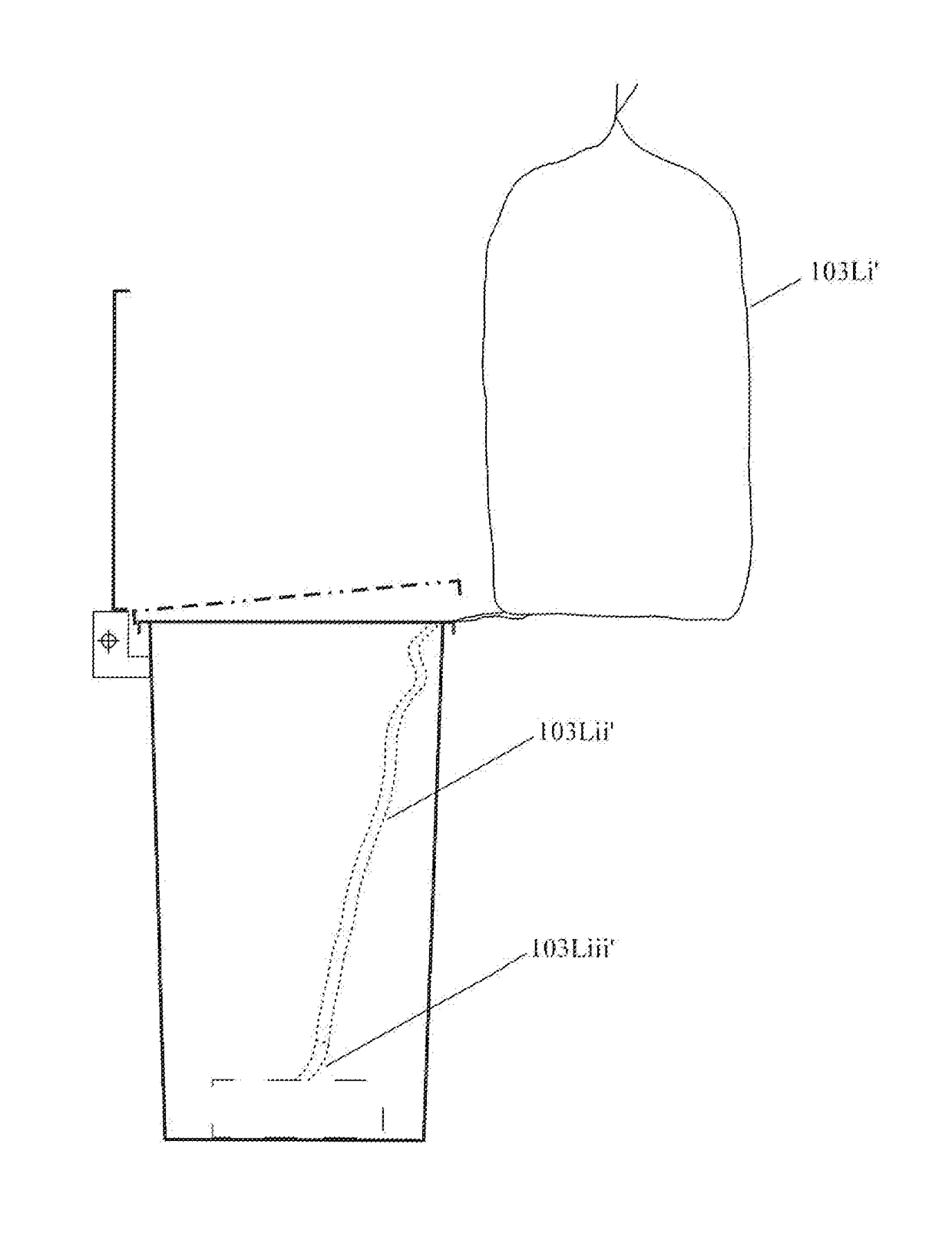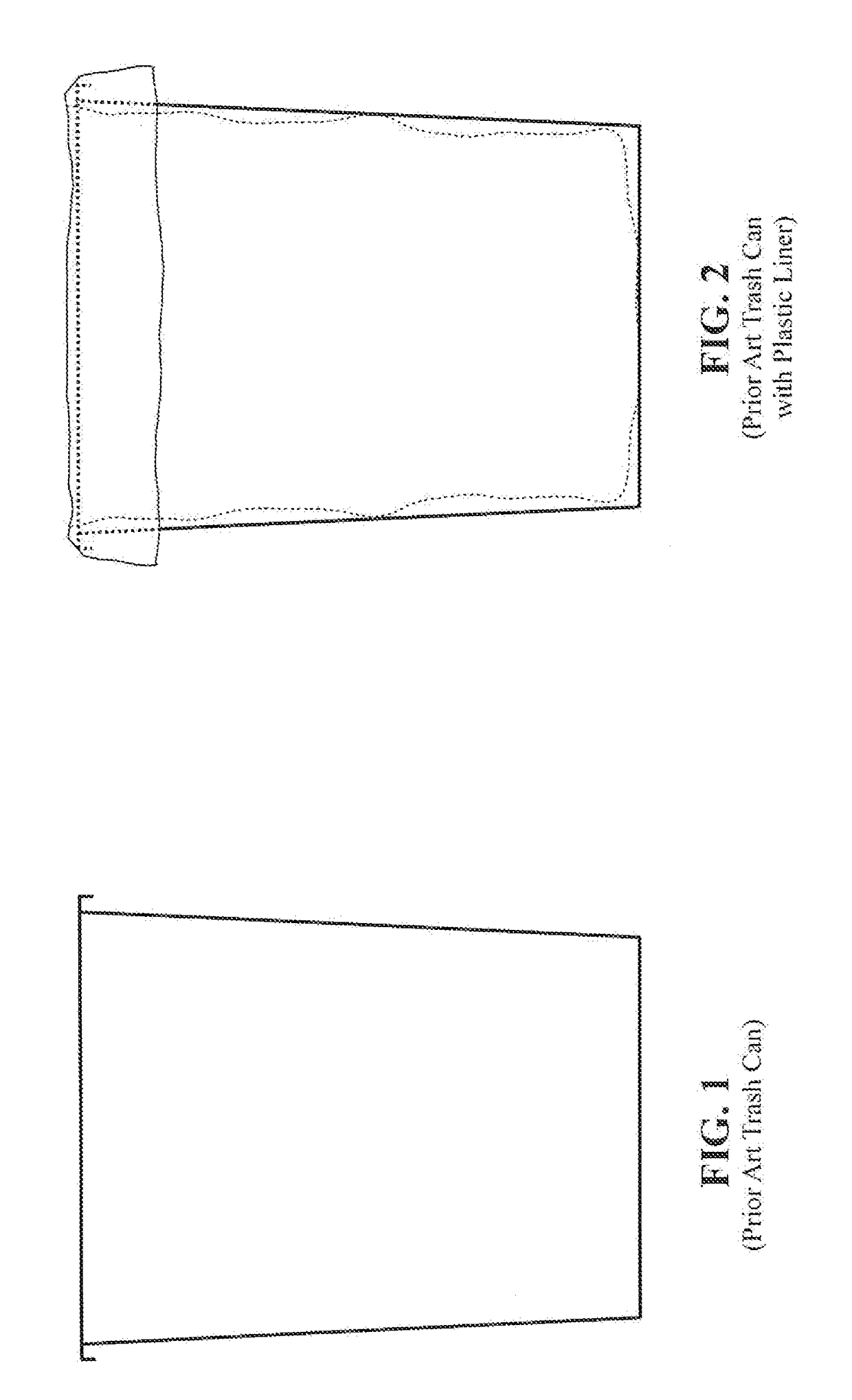Trash Can Liner Box Support and Dispensing Arrangement
a technology for trash cans and liners, which is applied in the field of trash can liners and dispensing arrangements, to achieve the effects of easy movement of both arms, low peel adhesion, and low peel adhesion
- Summary
- Abstract
- Description
- Claims
- Application Information
AI Technical Summary
Benefits of technology
Problems solved by technology
Method used
Image
Examples
first embodiment
[0048]Secured to the bottom wall 10BW of the can 10C is a box assembly with trash can liners 100. The box 100, although shown secured to the bottom of the can 10C of trash can assembly 10, may similarly be secured to the bottom of any other trash can known in the art, including, but not limited to, the prior art trash can without a lid, as illustrated in FIG. 1. FIG. 4 illustrates a prior art trash can 11C formed without a pivotal lid, and which trash can is shown with the first trash can liner 103Li having been withdrawn from the box assembly 100 and expanded to fill the trash can, and to overhang the lip of the trash can,
[0049]FIGS. 5-7B show enlarged front, cross-sectional, and top and bottom views, respectively, of the box assembly 100 with trash can liners therein (e.g., 103Li, 103Lii, 103Lii, etc.). The box assembly 100 may contain trash can liners that may be particularly joined and successively packed therein (see e.g., FIG. 6), which is discussed further hereinafter.
[0050]T...
embodiment 310
[0063]FIGS. 17-18 show side and front views of a trash can embodiment 310, which may also be formed with or without the conventional lid and associated lid actuation mechanism and foot pedal.
[0064]The trash can 310 may be formed with a conventional upstanding wall and bottom wall 312 to form a container, and may additionally be formed with a floor wall 311 that may be positioned at a height above the bottom wall to form a lower chamber being sufficiently large to accommodate a box 301 of trash can liners to be received therein. An opening 313 may be formed in one side of the upstanding wall of the trash can, being sufficiently sized with respect to the profile of the box of liners 301, to permit ingress and egress of the box from beneath the floor 311. The floor 311 may have, as seen in FIG. 19, an opening 314 formed therein, through which the interconnected liners may be pulled into the container portion of the trash can. In one embodiment, the opening 314 may begin proximate to a ...
PUM
 Login to View More
Login to View More Abstract
Description
Claims
Application Information
 Login to View More
Login to View More - R&D
- Intellectual Property
- Life Sciences
- Materials
- Tech Scout
- Unparalleled Data Quality
- Higher Quality Content
- 60% Fewer Hallucinations
Browse by: Latest US Patents, China's latest patents, Technical Efficacy Thesaurus, Application Domain, Technology Topic, Popular Technical Reports.
© 2025 PatSnap. All rights reserved.Legal|Privacy policy|Modern Slavery Act Transparency Statement|Sitemap|About US| Contact US: help@patsnap.com



